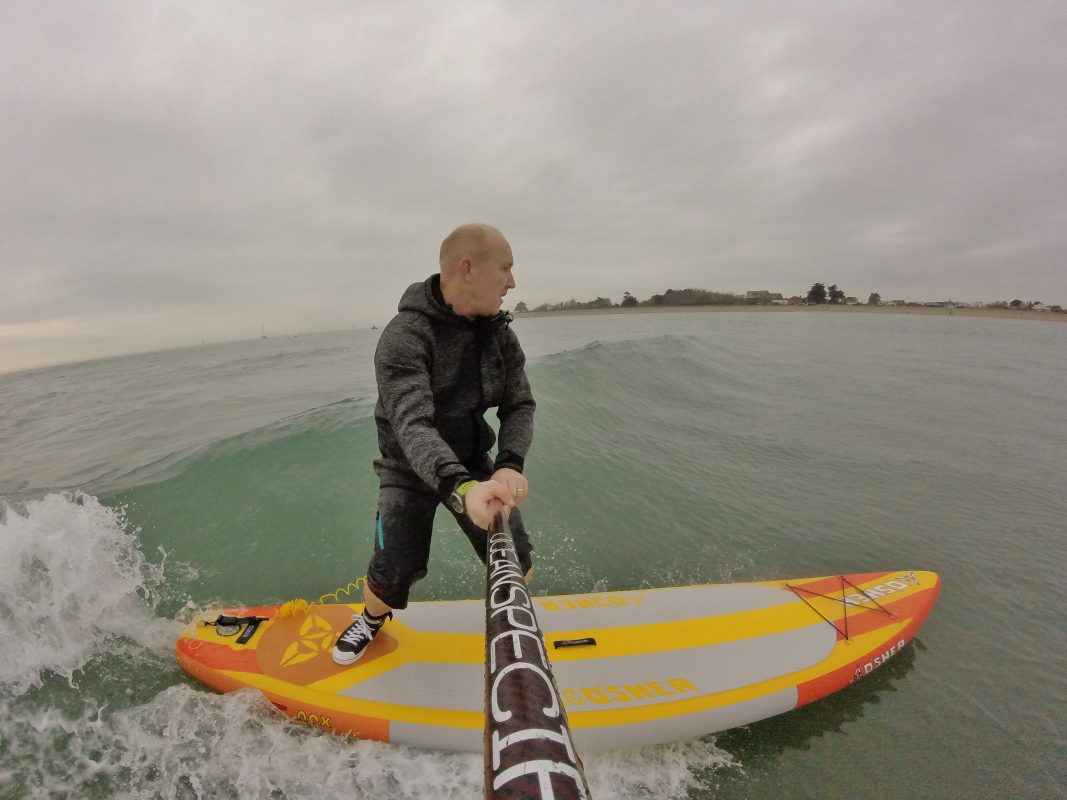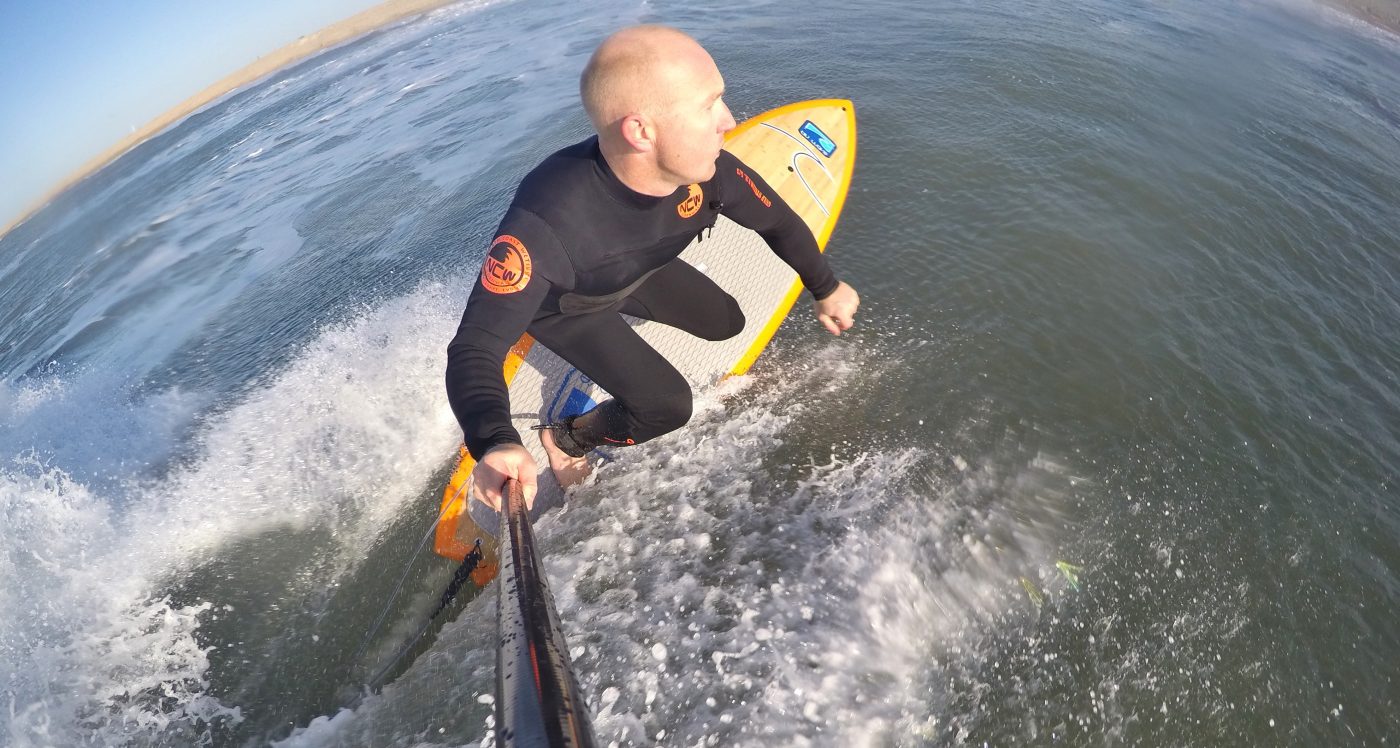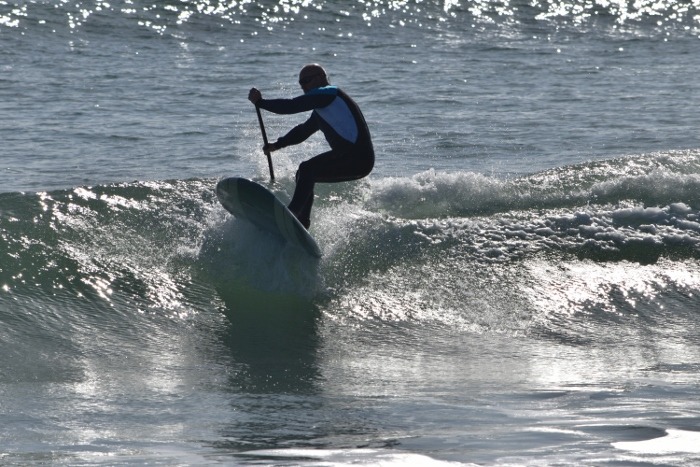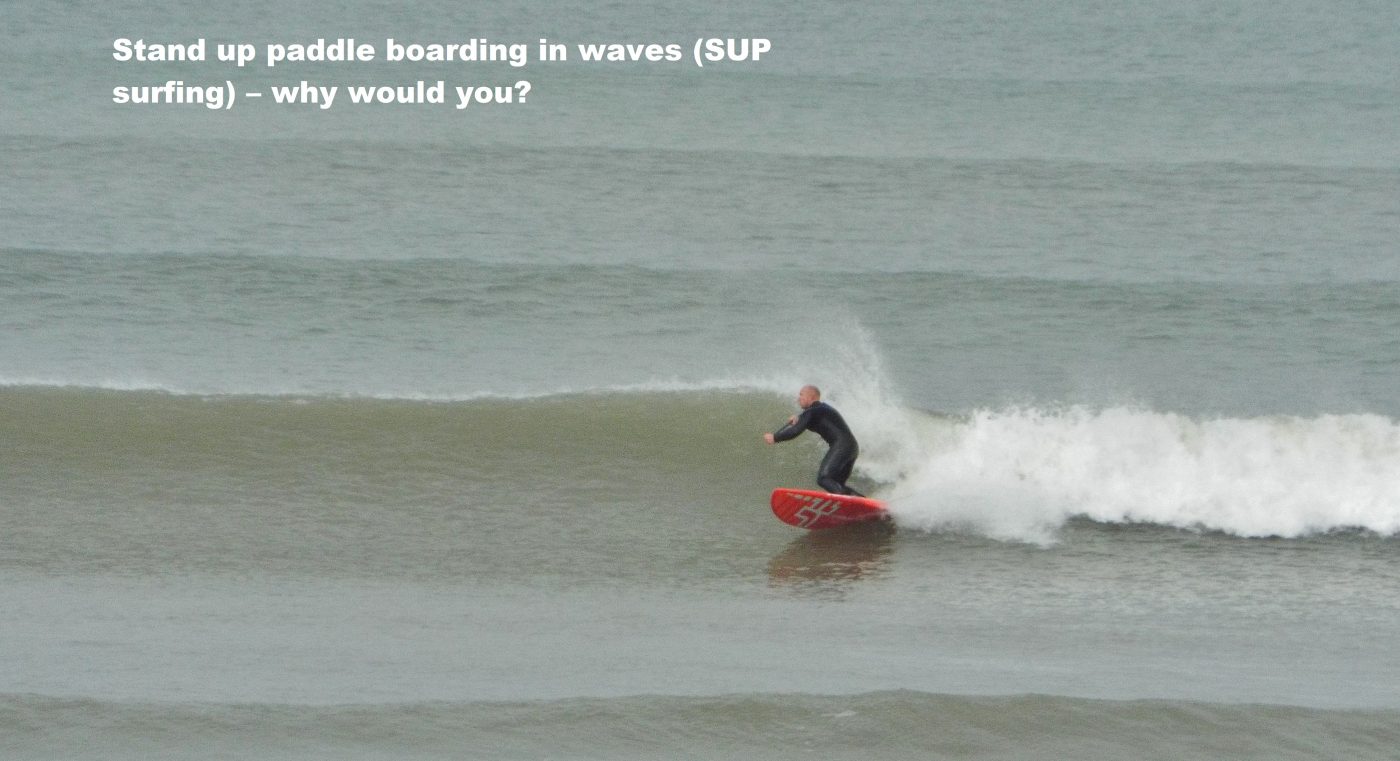For surfers there’s nothing more blasphemous than diverting from the purity of wave, board and rider. Battling Neptune and Mother Nature to score idyllic liquid slides is a meditative experience. Adding kit, such as a paddle, is often seen as kooky at best and heresy at worst, worthy of a lynching! Yep, some riders do take it that seriously.

The fact is, however, the UK isn’t blessed with quality waves. Outside of west coast facing beaches swell consistency is pretty lacking. And even down in Kernow there’s a quality issue. Often faced with onshore winds and breaks at the mercy of shifty sands that make or break the banks it’s as pot luck as anywhere. Every spot has its day but these don’t roll around often and with riders having to attend to everyday responsibilities and commitments it’s nigh impossible to drop everything at a moment’s notice and head beach bound.
One reason, therefore, to ride a stand up paddle board in waves is you increase your hit rate considerably. With a SUP you don’t need a particularly great wave. Ankle slappers will do, which makes your choice of location less specific. If you’re a city dweller, for instance, then you may be fairly close to coastline that hasn’t traditionally been noted for quality surf. Suddenly, with SUP under arm, a dribble of a wave lapping onto this type of beach is ripe for your picking.

Stand up paddle boards have another golden point to consider with wave riding in mind: the paddle. Whilst this is the very ‘thing’ that causes the dreaded stink eye from surfers who’re having none of it it’s a paddler’s defining piece of kit and one that’ll help no end in surf.
A paddle allows riders to move quicker, cover more ground efficiently thereby getting into prime take off position earlier and then being able to catch the wave sooner – giving more time actually on the wave – shouldn’t be sniffed at. Sliding down liquid walls aboard a SUP is a unique experience. The oversized nature of a stand up paddle board means momentum is greater than on a surfboard. Combine this with the additional propulsion of a paddle and you can see why smaller waves, and/or section swells, are ripe for the picking. SUP surfers are able to get longer rides than a surfer in smaller conditions. The paddle also allows (for those with the skill) more leverage for cranking turns so even bigger sleds are poised to be thrown around, carved hard and used for spray chucking as much as their prone siblings.

Lastly, a SUP gives paddlers the opportunity to access off the beaten track waves that everyday surfers wouldn’t consider. That offshore bombie breaking a mile out to sea; the little left tucked away round the corner; a sand bank chucking up A-frames in the middle of an estuary. You get the idea. With a SUP as your wave riding weapon of choice you’ll enjoy a much more diverse type of ‘surfing’ and that alone can’t be a bad thing.
Don’t forget to check out the rest of NCW’s Beginner Guide To SUP and SUP Knowledge article/page via the following links –

